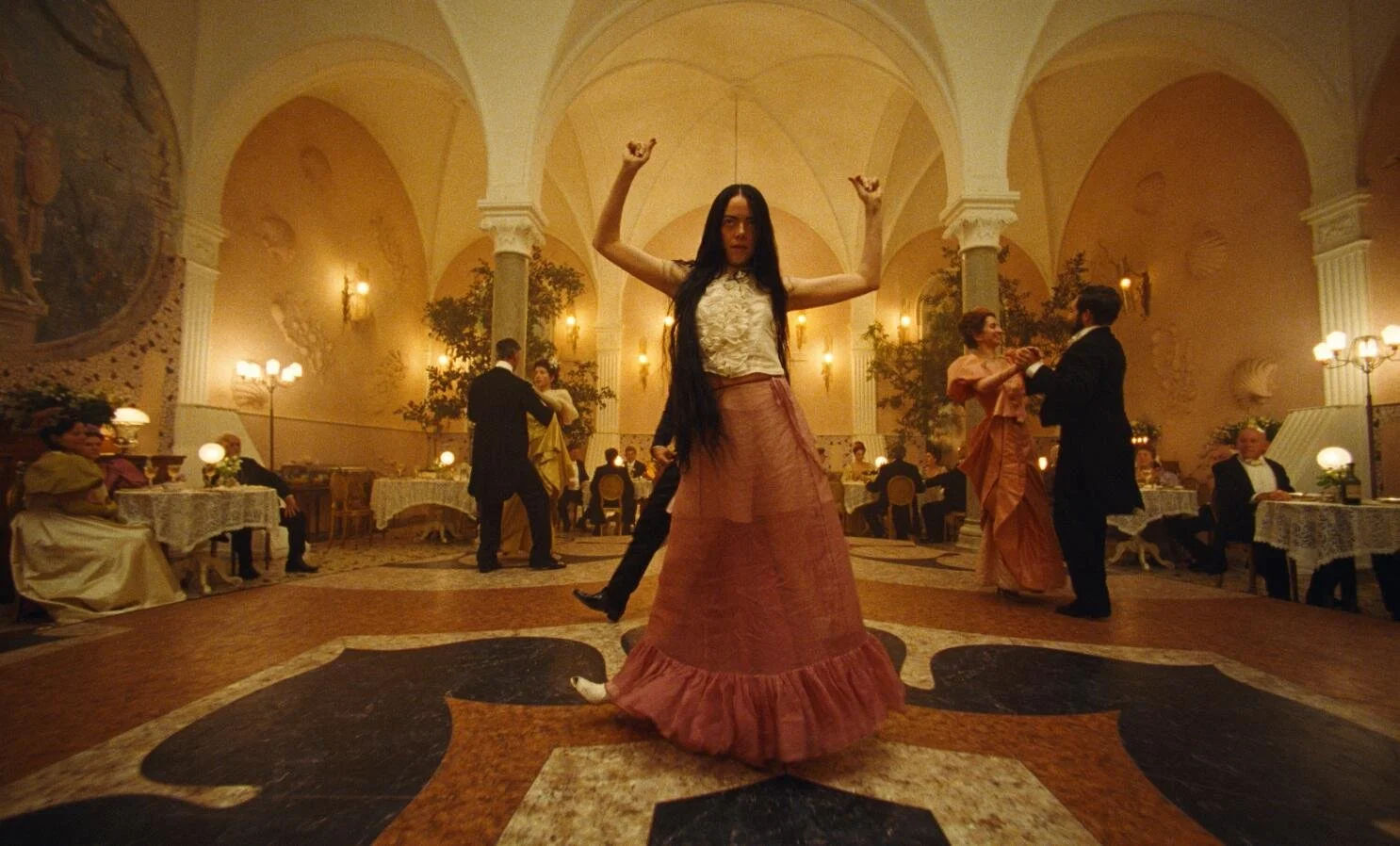THE REMARKABLE SET WORK OF ‘POOR THINGS’
The production designers for the much-anticipated film Poor Things, directed by Yorgos Lanthimos, have revealed that they aimed to create an aesthetically-pleasing world reminiscent of a 1930s studio movie, incorporating modern technology. In an interview with Dezeen, Shona Heath and James Price said that the plot, which tells the story of a woman with a child's mind trapped in an adult's body, influenced the way they approached their design work. "The script guided us into the world we wanted to create, and the first step was working out how Bella lived," Price stated. By collaborating closely, they were able to achieve a cohesive, visually striking aesthetic that would take audiences on a journey to a different era while highlighting the unique elements of the narrative.
The world of the character Bella was conceptualized by her father, Godwin Baxter, who was depicted as a maverick doctor with fine taste and artistic tendencies. According to the film's production designers, Shona Heath and James Price, the setting of Bella's home, which was built in large sets in Budapest, was inspired by the Sir John Soanes Museum in London. The neo-classical style of the museum, which is filled with paintings, antiques, and art collected by its owner in the 19th century, served as the source of inspiration for the interior design of Bella's home.
To create visual interest and contrast, the production designers of the film chose to mix different textures and architecture. Inspired by the character of the maverick doctor played by Willem Dafoe, who was depicted as splicing up animals and other subjects, the designers sought to "splicing up" the settings, emphasizing the contrast of sleek and heavy, as well as flat and textured surfaces. Additionally, they incorporated a unique element into the design of Bella's room, which was intended to be padded by her father, Godwin Baxter, to protect her from injuring herself in her large body with a child's mind.
While preparing for the production design, Shona Heath and James Price took great care in creating a rich texture for the sets, at the explicit request of the director, Yorgos Lanthimos, who shot portions of the film in black and white. Upon learning this, Heath noted that the director's preference for texture was a significant factor in his artistic vision for the film, as it was a crucial element in conveying the desired aesthetic in a monochromatic palette. Additionally, Heath posits that Lanthimos's interest in texture was an indication that he recognized the potential impact that a textured environment would have in black and white cinematography. The first act of the film is primarily set within Bella's home and the operating theatre, where Baxter creates hybrid animals, including a dog-chicken creature and a goat with the head of a duck. However, the film progresses to showcase Bella's excursions into the outside world.
Heath and Price took extensive consideration and created a vibrant set design that highlighted the contrast between Bella's black-and-white upbringing and her coming-of-age experiences. The film's primary settings, which take up most of the film, were designed to emphasize a colorful aesthetic that illustrated Bella's newfound experiences in a colorful world outside the confines of her home. For the scenes set in Lisbon - the first city that Bella visits - the designers drew inspiration from a diverse range of architectural references. In terms of the sets, their approach concentrated on avoiding uniformity, opting for a unique mix of architectural references that would reinforce the authentic feel of the city. The final result was a set design that stood out amongst the traditional black-and-white aesthetics of the film.
In addition to the rich color palette of the sets, James Price mentioned that the design references incorporated various architectural styles, including modernism and medievalism. To create this contrast and provide a contrast between Bella's black-and-white upbringing and her coming-of-age experiences, Price and Heath also added mythical creatures and maritime motifs to the mix. Some of these included owls, dolphins, fish, and mermaids, which further served to add to the visual interest and diversity of the settings. These elements combined to provide a unique and visually appealing backdrop for the film's primary settings, enhancing the overall aesthetic and achieving the desired effect.
The brothel set design is an integral aspect of the film and holds great significance in terms of its impact on the story and the audience's dwell time in the setting. The design is heavily ornamented in a Baroque style with phallic windows and other details that suggest its purpose. The design inspiration for the brothel was derived from the script, as the production designers intended to convey Bella's cultural naivety and lack of familiarity with conventional social norms through her reaction to the bizarre architecture. The element of humor and the comedic moment were the primary motivators in the set design, creating a visually striking and memorable backdrop for the characters' interactions.
The set design of Alexandria in "Poor Things" is a miniature set that serves as a condensed overview of the city and underscores a fundamental plot point. James Price explained that the set is influenced by the ancient Alexandria Lighthouse and the "ivory towers" in the city. The set was also informed by the book Cabinet of Curiosities, which provided inspiration for the visual storytelling and authenticity of the fictional city. With the set's use of miniature set pieces and influence from historical architecture, the designers aimed to create a visually striking and memorable backdrop for the characters' interactions within the city setting.
When discussing the set design of Alexandria in "Poor Things," James Price and Shona Heath noted that the set was influenced by various historical buildings and architectural styles, including the ancient Alexandria Lighthouse and the "ivory towers" featured in the book Cabinet of Curiosities. The production designers drew inspiration from these sources and incorporated wordplays and various architectural references to create a visually striking and memorable backdrop for the setting in the film. Additionally, the set was designed to be a miniature to convey an overview of the city, with a focus on distilling a lot of information in a small space. The first scene in the city was shot in an existing location, a restaurant that was transformed into a breakfast room resembling a "almost a pseudo Bond villain lair."
From there, the film transitions into the slums below the tower, where the production designers took architectural inspiration from the Garden of Earthly Delights painting, specifically its depiction of a fiery pit and craggy opening that led to a fiery hell. This image served as the inspiration for the overall design and aesthetic of the city, resulting in an overall look that combined modern technology with the style and feel of a 1930s studio movie. The designers were able to create a new and unique aesthetic that was not simply a replica of the past but rather a vision of what a 1930s film might look like with today's technology.
The production design team behind "Poor Things" consisting of James Price, Shona Heath and Zsuzsa Mihalek have received an Oscar nomination for their contributions to the film's set design and set decorations. The designers have expressed their appreciation for being recognized for their work on the film. James Price mentioned that the film is worth discussing and that he is grateful for the nomination, which provides an opportunity to talk about the film with others.
Shona Heath said that while the film's theme may be considered depressing, it also offers an uplifting and celebratory experience for the audience. She also added that it is a complete film that has been well-received by audiences and that the love that people have for it serves as a testament to the film's quality.
Other recent films and TV series that have showcased impressive set design include Killers of the Flower Moon, which built a railway station from scratch, and Asteroid City, which was built as a fully functioning town complete with sewers.

